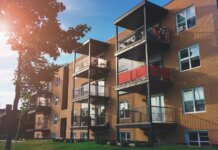The share of consumers who expect home prices to go up in the next 12 months decreased six percentage points in August compared with July, while the share who say now is a good time to sell a home decreased five percentage points, according to Fannie Mae’s Home Purchase Sentiment Index (HPSI).
In addition, the share of consumers who reported a positive employment outlook increased four percentage points, while the share of those reporting significantly higher household income fell one percentage point. Overall, the index fell 1.5 points to a score of 85.0 in August but continued its gradual climb upward from the same period last year.
To learn more about the macro factors that are currently shaping the housing market, including the U.S. job market and the impact of college debt on homeownership, MortgageOrb recently interviewed Doug Duncan, senior vice president and chief economist for Fannie Mae.
Duncan, who, for the second year in a row, won the 2015-2016 National Association for Business Economics Outlook Award for the most accurate macroeconomic forecast, also shared his thoughts on what an increase in Libor rates means for borrowers with adjustable-rate mortgages.
Q: What is behind the drop in the August HPSI, and what does it mean for home sales for the rest of the year?
Duncan: The HPSI moves from month to month based on what is on the mind of our survey respondents, so we use it as one market indicator but not as a direct forecast tool. It assists in forming our judgment portion of the forecast outlook. In general, the HPSI suggests continued growth in housing in the months ahead based on consumers’ feelings of employment and financial security.
Q: How does the August jobs report published Friday, Sept. 2 impact home sales activity, and was this picked up in the August HPSI?
Duncan: The September employment report was not a bad report, per se, but it was below expectations. Thus, it likely will lead the Fed to delay any rate hike until December or later. From a housing perspective, it should not change our forecast. It is impossible to say whether the HPSI was directly affected by the same factors that impacted hiring levels. However, there was a bit of good news in that construction employment for single-family homes picked up.
Q: We had a report that new home sales rose 12.4% in July to an annual rate of about 654,000. That’s a level not seen since October 2007. At the same time, existing-home sales for July fell 3.25%. What’s behind this disparity?
Duncan: New home sales continue to rise more rapidly than existing-home sales in percentage terms, but both are rising. There is monthly volatility in both data series, so it is important to look at the longer-term trends. New home construction still lags behind demand growth, so we would expect it to continue to rise faster than existing-home sales.
Q: What is your outlook for new home sales for the year and existing-home sales for the year?
Duncan: We expect new home sales to rise around 10% in 2016 over 2015. We expect existing-home sales to rise between 3% and 4% in 2016 over 2015.
Q: Is a bulk of this year’s business for mortgage lenders related to purchase applications? How much of a percentage of total mortgage lending is purchase-related, and how much is tied to loan refinancings?
Duncan: The decrease in interest rates has boosted refinance activity beyond our expectations for 2016 – but refinancings will still be under half of the total mortgage origination for the year. Right now, our forecast has the refi share at 42%, but with the low rates and house price increases, we are seeing additional strength in the refi space as people are starting to extract some cash.
Q: Mortgage rates have been hovering near historic lows, and home prices have appreciated. Median home prices are up 5.3% from a year earlier. Does this suggest we will see a rise in cash-out refinancings? Where are cash-out refinancings currently? Are they on the rise? Do homeowners want to borrow against the equity of their homes or not?
Duncan: Homeowners are starting to refinance their existing mortgages for larger amounts when they get a new mortgage and, thereby, extracting cash. This is not yet a major event, but with inflation-adjusted house prices having risen significantly over the last four years and interest rates staying low, we are seeing a definite increase in cash-out refinancings.
Q: Much has been said about the impact of student loan debt on homeownership. Is college debt hurting affordability, and what does this mean for homeownership rates?
Duncan: The main driver in the decline in the homeownership rate is demographic. The GenX group is smaller than the boomers, and the millennials are not yet into full home purchase mode. There is clearly a financial conservatism among younger households, but there is also the fact that the weak economic expansion has kept millennial incomes below those of the previous groups at the same age, so they need to see income growth. Our research shows that if a household takes on student loan debt but doesn’t get the degree, this holds them back from ownership. If they get a four-year degree or higher, they typically make the step to homeownership once they start a family. More than 90% of young people say they eventually want to own homes.
Q: Libor rates have risen dramatically. Will this impact adjustable-rate mortgage borrowers whose loan products are indexed off of Libor?
Duncan: The rise in Libor will impact those households who have adjustable-rate mortgages with the index tied to Libor. However, most of them were originated long enough ago that they have actually seen their mortgage rates drop significantly in this low-rate environment. Those rates should start to rise a bit now, but many homeowners may choose to refinance out of those adjustable-rate loans into fixed-rate loans if the rate move is significant.











